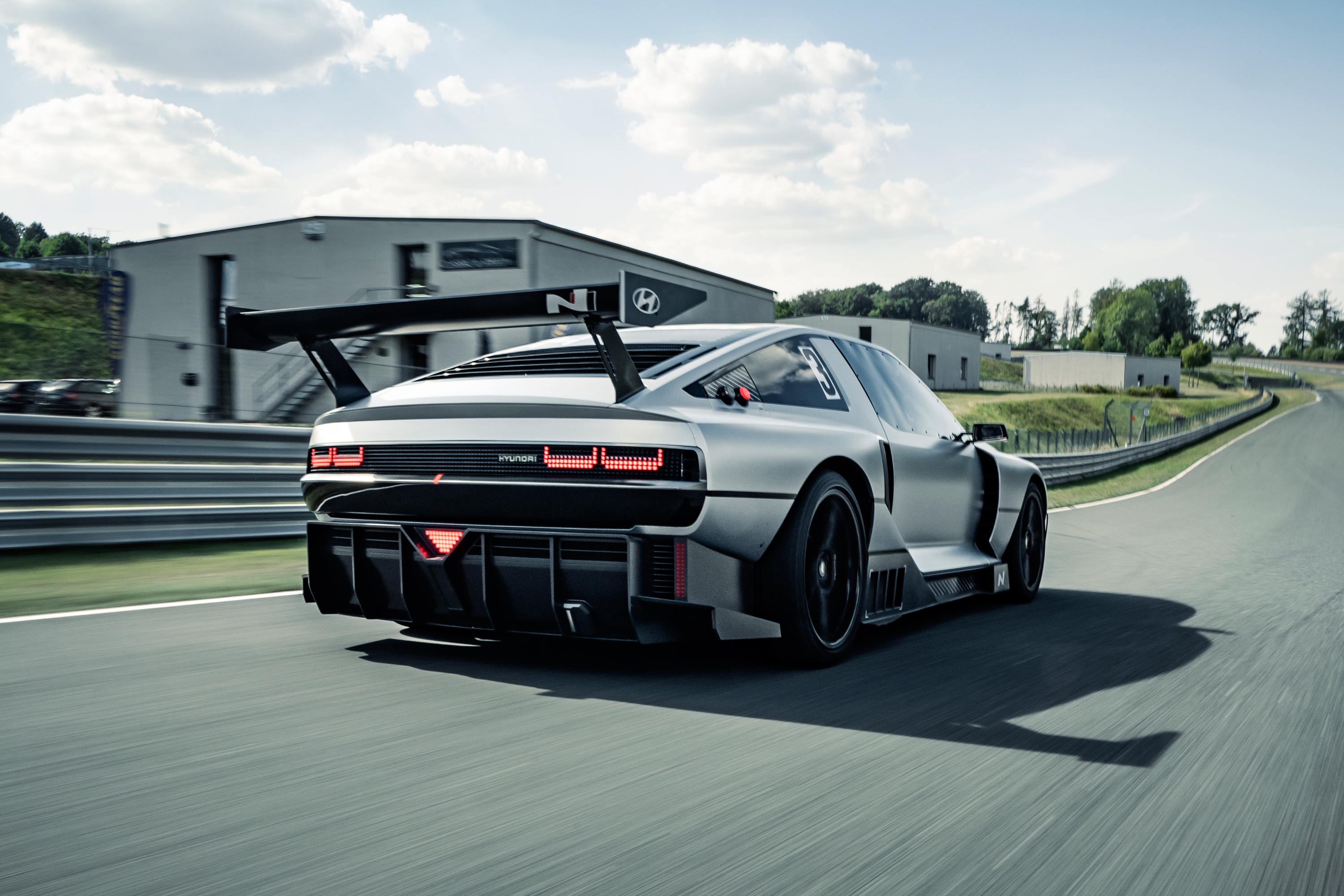Automotive designers look in all directions for inspiration, from Japanese maple trees to the most modern furniture. They also pull from the vehicles of their childhood as they create models with eye-catching looks, modern technology and proportion that meet customer and company wants and needs.
At the 2023 Detroit Concours d’Elegance, Hyundai designer Hak Soo Ha sat down with Newsweek as part of a sponsored panel discussion to talk about vehicle design in the EV era, the future of car events, what inspired him as a child and what challenges designers now face.
As the designer of Hyundai’s modern Pony-inspired concept, he leaned heavily into his past.
“In Korea the first major vehicle was born in the 1970s. So when I was growing up, a lot of cars were basically just cars. My father’s first car was a Pony, the first Korean designed and engineered and manufactured vehicle, and I have a lot of memories of it. My friends who grew up in the States have similar memories about the VW Beetles and you know, traveling in the backseat, in the parcel tray, and I have similar memories,” Ha told Newsweek.
“When I joined Ford, I got to know the car culture of Detroit. But when I went back to Hyundai my first kind of a non-production project was a Heritage Series and I took the Pony from my memories and did an analog and digital mixture. I guess we all grew up in different environments and whatever cars happen to be in our childhood memory, they become kind of staple in our design career.”
The original Hyundai Pony premiered at the Turin Motor Show in 1974, and 49 years later it was rebuilt as part of the company’s heritage project, “Hyundai Reunion”. It was unveiled at the 2023 Villa d’Este concours at Lake Como, Italy, next to the futuristic N Vision 74, which takes styling cues from the original Pony.
“Hyundai has been around long enough to actually have a design heritage. The original production Pony from the 1970s and the Pony Coupe concept were hugely significant in Korea, a country that at the time was still very much a developing nation. Hyundai models over the next few decades rose in prominence,” Ed Kim, President and Chief Analyst at AutoPacific told Newsweek.
“By around 2010, Hyundai was really pushing the envelope with design with models like the sixth generation Hyundai Sonata and rear wheel drive Genesis Coupe. Hyundai design has only gotten more mature, distinctive, and brave in the years since,” Kim said.
Ha has worked at Honda, Ford and Hyundai and at each has been involved in concept creation and ideation. Automakers come up with keywords, usually things like “dynamic,” or “high-tech” or “cutting edge.” However, he explained that with cost and weight reductions and more stringent regulations everyone arrives at the same conclusion and cars start to look alike.
“I think it’s important that you kind of revisit your heritage so that your new product has a distinctive design that identity that people can recognize. In order for us to look into the future we are looking back into the past, and sometimes it gives a lot of answers. With Hyundai now we have 50 years of history. And I thought now it’s a time that we recognize and celebrate our heritage and past and history, so that we can set our own future,” said Ha.
Ha talked about how designers look at cars differently than the average person. They look at them through a long-term lens and try to figure out what makes them timeless or forgotten. And what he has landed on is passion, with a side of accountability.
“But it’s also important to talk about how we go about disposing batteries or recycling at the end of the lifecycle of the car. Same with the LCD and OLED screens. There’s a lot of sustainability responsibilities that we have to carry on as well,” Ha said.
“Having said that, I think we still have to bring passion and a kind of love for the freedom that people have to move around, go places and build their own memories. But things are getting more complex. Before, the next car just had to look better than the last car. But now with these environmental responsibilities, more commitment for safety, energy efficiency and manufacturing, there are definitely more challenges for designers to absorb all that and come up with a unique solution that will stand the test of time many years down the road. And still come across his future classics.”

